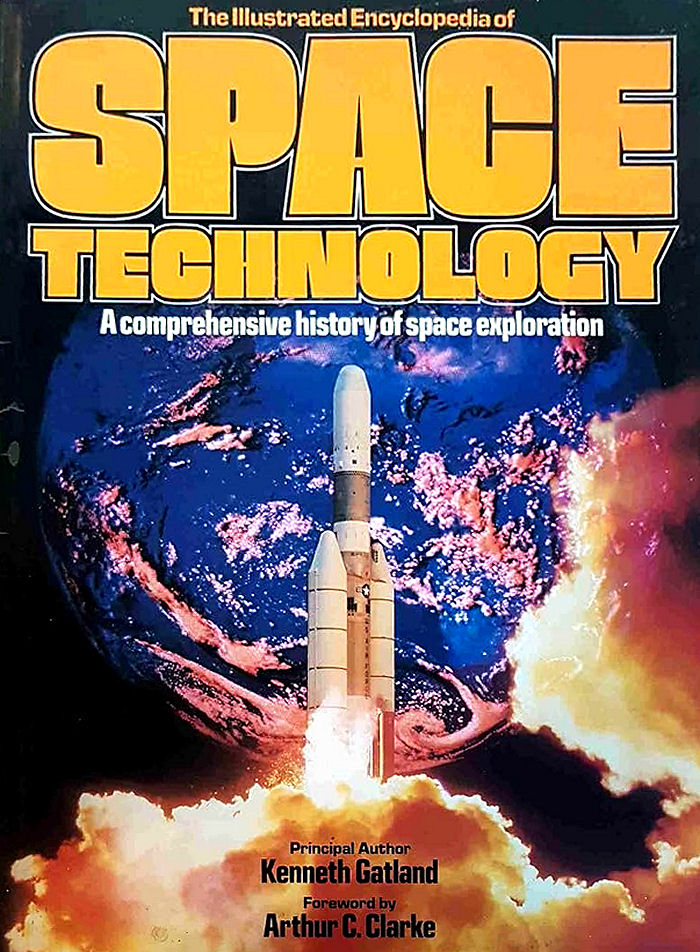 Story: An exhaustive compilation of space hardware, both manned and unmanned, complete with colorful Popular Mechanics-style cutaway diagrams, a complete history of successful and less than successful launches through the year of publications, details of abandoned programs (such as a Nixon-era push for man on Mars), possible future projects (orbiting power stations and starships), and everything in between.
Story: An exhaustive compilation of space hardware, both manned and unmanned, complete with colorful Popular Mechanics-style cutaway diagrams, a complete history of successful and less than successful launches through the year of publications, details of abandoned programs (such as a Nixon-era push for man on Mars), possible future projects (orbiting power stations and starships), and everything in between.
Review: I love this book. I’ve had it for nearly 20 years, and despite the fact that it’s out of print, and despite the fact that I could be reviewing something readily available through Amazon.com that would reap a return for my investment of writing about it, I’d much rather tell you a little something about Kenneth Gatland’s wonderful book.
I’ll say this from the outset – this book urgently needs to be brought, kicking and screaming, into the 21st century. As informative and forward-looking as it is, it predates the Challenger disaster, the Galileo, Magellan and Cassini space probes, Mir and the International Space Station, the Mars Rover, and literally dozens of other important developments in the history of man’s exploration of space. But up until 1984, if it’s manned or unmanned, it’s in here. From the Soviet Zond and Luna unmanned lunar probes, to the early Mariner and Pioneer missions which predated the Vikings and Voyagers, to complete diagrams of the Vostok, Mercury, Soyuz, Gemini and Apollo spacecraft (and beyond), this book is a dense repository of detailed information about the spacecraft that have furthered humankind’s reach into the stars.
Not to imply that it’s all one big picture book, however; there is text in “Space Technology”, and a lot of it, too. A comprehensive text covers everything from early designs to failed launches to what eventually flew – and what lessons were learned which were then applied to the next generation of spacecraft.
Some of the most interesting sections of the book dwell on some of the most routine types of spacecraft – namely, weather observation satellites, communications satellites (with a hefty nod to Arthur C. Clarke, who also wrote the book’s foreword), and even military surveillance satellites, including a detailed look at the development of the mothballed Manned Orbital Laboratory, which would have been the first manned space station. This USAF project would have used the two-man Gemini capsule as its workhorse – and would’ve predated Skylab by a little under a decade.
As it’s so out of date, where do I get off recommending this book? What makes it worth your while to track down a book whose detailed history of space travel ends just a little bit after Sally Ride’s first orbital flight? The sheer amount of detailed information in here, that’s why. As a resource covering the machines that have allowed us to see beyond the Earth’s atmosphere, and the machines that have allowed us to go even further than that, Space Technology is unparalleled. And despite my caveats of the book’s age, it still manages to include detailed schematics for the Hubble Space Telescope and even a very early version of what we now know as the International Space Station.
An update or a companion volume would be invaluable – and might just wind up being the book with whom I spend the most time for the next twenty years.
Year: 1984
Author: Kenneth Gatland
Illustrator: Mike Badrocke
Publisher: Harmony
Pages: 301 pages



